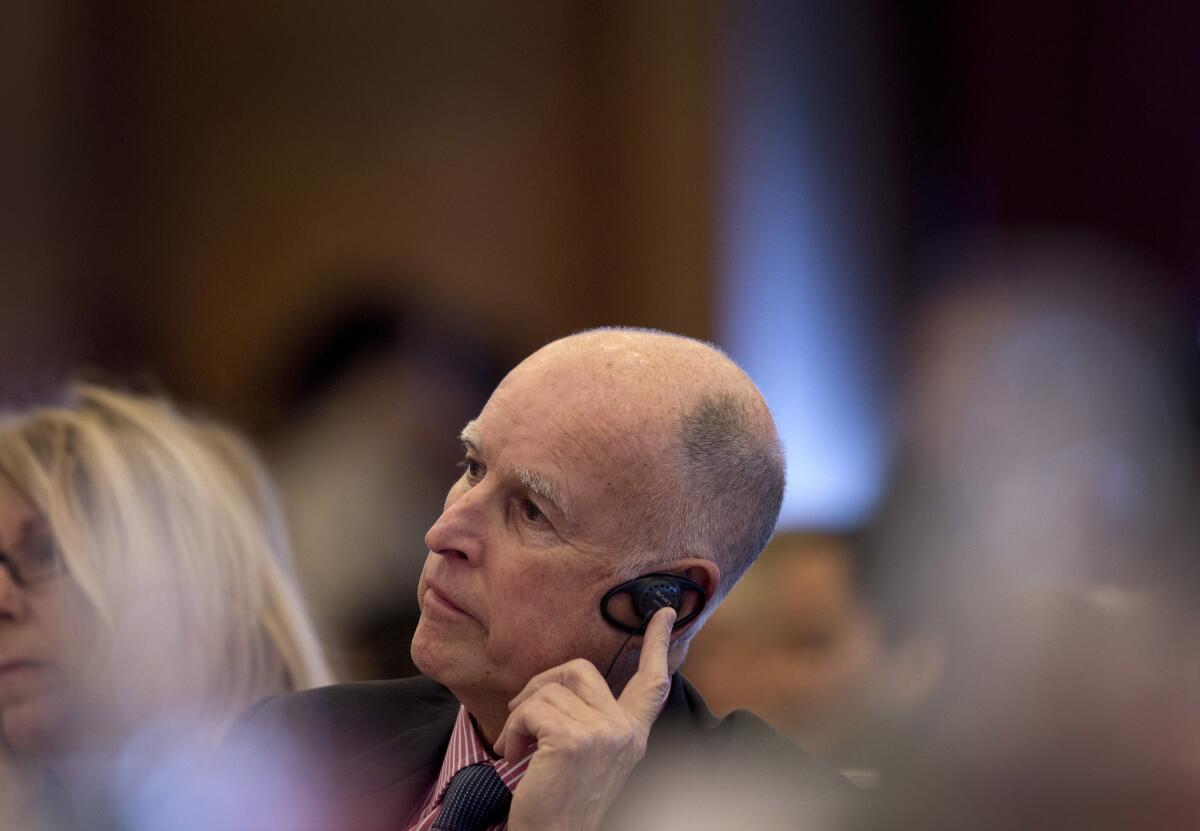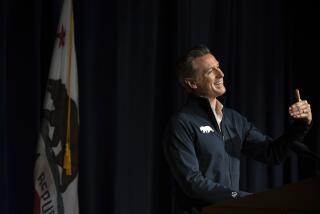Welcome home, governor. Now get to work

SACRAMENTO—Let’s welcome the governor back home. It must be sobering. The work has been piling up. The real, difficult work.
Actually, it was piling up even before Gov. Jerry Brown departed on a weeklong “trade and investment” mission to China with 90 lobbyists, business execs and pals — who kicked in enough extra money to pay for him and his aides.
As I previously wrote, if this was really worth the governor’s time and energy — if the state actually did benefit, and it probably did — then the state should have paid for it, not a horde of favor-seeking special interests.
But that’s history. Every governor deserves a nice, attention-getting junket. It was no doubt exhilarating, if exhausting.
Now he faces a lot of drudgery that won’t be nearly as much fun. For example:
•Revising his proposed $146-billion budget for the fiscal year starting July 1. An update is due in mid-May.
Key question: What to do with the extra money that’s pouring into the treasury? As of Tuesday, the state was running $5 billion ahead of projections. No one knows for sure whether that gusher will keep flowing, or even if it is a mirage.
But assuming that the state is reaping a windfall, how do the governor and Legislature spend it? Hopefully not on permanent programs, because it could be merely one-time money. Better to stash it in a rainy-day reserve or use it to chip away at what Brown has ridiculed as the state’s “wall of debt,” which is more awesome even than the Great Wall of China.
But to do either, Brown might need to tame some rambunctious fellow Democrats, who are sure to insist on dumping the money into permanent programs.
•Streamlining California’s oft-abused, 43-year-old California Environmental Quality Act, or CEQA.
Touring China, Brown marveled at all the construction and vowed, “When I get back, we’ll emulate some of that.” But California developers frequently are beaten down by CEQA, which sometimes is used by litigating labor, business competitors and NIMBYs (“Not in my back yard”) for their own non-environmental agendas.
It’s a big reason why California has earned a reputation for being business unfriendly.
But even before departing China, Brown disclosed he wasn’t going to push CEQA reform this year. There’s too much opposition within the Democratic Party and its labor and environmental patrons, the governor contended. “It would be difficult for the Legislature,” he said. “The appetite for CEQA reform is much stronger outside the state Capitol than it is inside.”
“I’m not sure why the governor would say that,” responded Senate leader Darrell Steinberg (D-Sacramento), who is pushing reform legislation.
Possible answer: Brown is up for reelection next year and wants to keep the left side of his political base happy.
•Redistributing school money. Brown wants to provide more dollars to mostly inner-city schools — those with high percentages of English learners and students from low-income families — at the expense of many suburban districts.
It’s a sort of Robin Hood scheme. There’d be no new money, just a reshuffling of anticipated dollars. The proposal has gained increasing skepticism in the Legislature as lawmakers learn about winners and losers.
Bob Blattner, a veteran nonpartisan education consultant, calculates that losers would outnumber winners by 2 to 1 among districts — mainly smaller ones — and charter schools.
Brown should either dig up some new school money — and he’s not about to propose another tax increase — or substantially amend his proposal.
•Water. The Legislature is waiting for Brown to decide how to reduce a $11.1-billion, pork-laden water bond proposal that is needed to, among other things, finance ecological restoration of the Sacramento-San Joaquin River Delta.
And that’s necessary before the state can proceed with repairing and updating California’s waterworks by digging two tunnels under the delta to carry Sacramento River water south into the San Joaquin Valley and Southern California.
All sides are squabbling over this, and Brown needs to lead.
That’s just a partial list. Brown has many other unfinished chores, including:
Coming to terms with the liberal Legislature on how to implement President Obama’s healthcare expansion; preparing to release 10,000 state prisoners if he can’t obtain U.S. Supreme Court relief from a lower court edict; and regulating hydraulic fracturing in oil and gas extraction, which is environmentally suspect.
Legislators have complained that the governor hasn’t engaged them on these pressing issues all year.
He did seem to be taking a nap, although it’s often hard to tell. Brown resists communicating what he’s up to.
In fact, he has had the smallest and weakest communications staff of any governor of the last half-century. Conveying messages through the news media to the public never has been a priority — his China venture being an exception.
Then again, he has been on a roll politically.
A new poll by the Public Policy Institute of California, released Wednesday, shows the governor with a respectable job approval rating: 49% approval, 41% disapproval among likely voters.
“He has created realistic expectations of what a governor can do,” says Mark Baldassare, the institute’s president and pollster. “He hasn’t over-promised. He has created very modest expectations and generally delivered on those modest expectations.”
Brown also has created political capital he should spend — making California more business friendly, for example. Finishing and updating the water project his father, Pat Brown, started. Reforming education.
China was inspiring — hopefully enough to propel the governor full-bore into completing his arduous chores at the Capitol.
More to Read
Start your day right
Sign up for Essential California for news, features and recommendations from the L.A. Times and beyond in your inbox six days a week.
You may occasionally receive promotional content from the Los Angeles Times.







